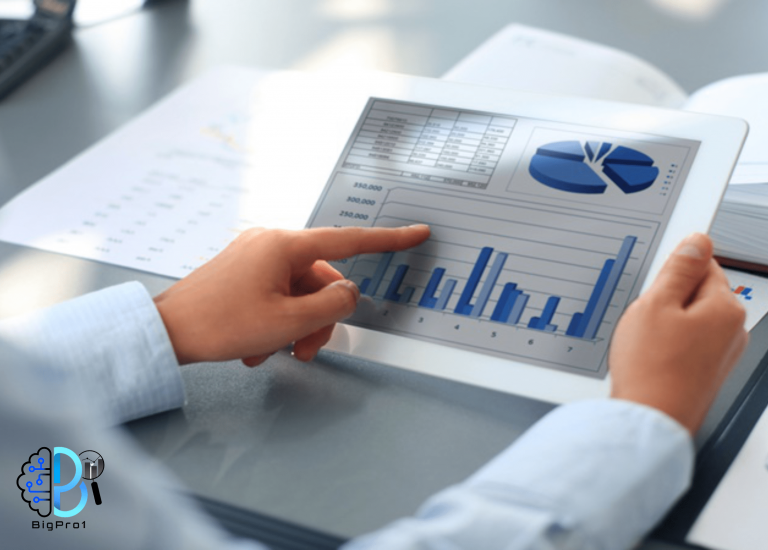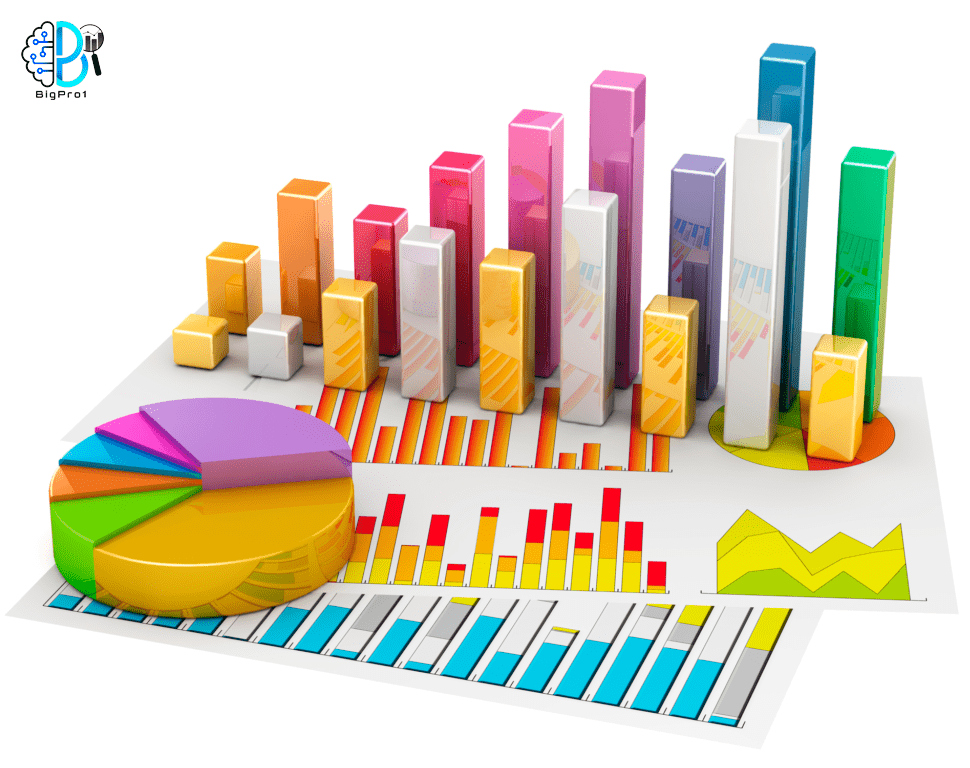Statistics is a branch of mathematics concerned with the collection, organization, analysis, interpretation, and presentation of data. At its core, statistics deals with the inherent uncertainty and variability that exist in most real-world phenomena. By employing mathematical and computational methods, statisticians aim to extract meaningful insights from data, identify patterns, and make informed decisions in the face of uncertainty.
What is Statistics?
In essence, statistics is the science of learning from data. It provides a framework for understanding and drawing conclusions from information, whether it comes from scientific experiments, social surveys, financial markets, or any other source. Statistics encompasses a wide range of techniques, from simple descriptive methods like calculating averages and creating graphs to more sophisticated inferential methods that allow us to make predictions and draw general conclusions about populations based on sample data.
This definition highlights the key aspects of statistics:
-
-
Data-driven: Statistics relies heavily on data as its primary source of information.
-
-
Uncertainty and Variability: Statistics acknowledges and addresses the inherent uncertainty and variability present in most real-world data.
-
-
Inference: Statistics provides methods for making inferences about populations based on sample data.
-
-
Decision-making: Statistics supports informed decision-making by providing a framework for evaluating evidence and quantifying risk.
By understanding and applying statistical principles, we can gain valuable insights from data, make better decisions, and improve our understanding of the world around us.
Types of Statistics
Descriptive statistics is a branch of statistics that focuses on summarizing and presenting data. It uses various methods to describe the main features of a dataset, such as measures of central tendency (mean, median, mode) and measures of dispersion (variance, standard deviation). By using descriptive statistics, we can gain a better understanding of our data and identify its key characteristics.
Inferential statistics is a branch of statistics that focuses on making inferences about a larger population based on a smaller sample. It uses various methods to draw conclusions and make predictions about the population. Inferential statistics allows us to generalize findings from a sample to the entire population, enabling us to make informed decisions even when we don’t have complete information.
In general, Descriptive statistics provides a summary of the data, while inferential statistics makes probabilistic statements about a population based on a sample. Descriptive statistics uses measures of central tendency and dispersion, while inferential statistics uses hypothesis testing and estimation procedures.
Measures of Central Tendency
Measures of central tendency are statistical values that represent the center point or typical value of a dataset.
-
-
The mean (arithmetic average) is calculated by summing all values and dividing by the count.
-
-
The median is the middle value when data is ordered.
-
-
The mode is the most frequent value.

Understanding Statistical Data
Understanding statistical data is a fundamental skill in many fields. It involves a deep understanding of statistical theory and methods to collect, clean, analyze, and interpret data. This includes exploratory data analysis, hypothesis testing, regression analysis, and more. By mastering these techniques, researchers and analysts can uncover hidden patterns, make accurate predictions, and draw reliable conclusions from data.
Methods in Statistics
Methods in Statistics refer to the various techniques and procedures used to collect, analyze, and interpret data. These methods are essential for drawing meaningful conclusions and making informed decisions based on information.
Data collection:
This involves gathering relevant data through various methods, such as surveys, experiments, and observations. The choice of data collection method depends on the research question and the population being studied.
Data summarization:
Once data is collected, it needs to be organized and summarized to make it more understandable. This involves using descriptive statistics, such as measures of central tendency (mean, median, mode) and measures of dispersion (range, variance, standard deviation), to describe the main features of the data.
Statistical analysis:
This involves using statistical techniques to test hypotheses, build models, and make inferences about a population based on a sample. Statistical analysis can be used to identify patterns, relationships, and trends in data.
Statistical Levels of Measurement
Statistical levels of measurement refer to the different ways in which variables can be categorized and quantified. The level of measurement determines the appropriate statistical analyses that can be performed on a given dataset. There are four main levels of measurement:
Nominal level:
In this level, data is categorized into distinct groups with no inherent order. For example, gender (male, female), eye color (blue, brown, green), or type of car (sedan, SUV, truck).
Ordinal level:
Data at the ordinal level can be ranked or ordered, but the differences between the categories are not necessarily equal. Examples include educational attainment (high school, bachelor’s, master’s), or satisfaction ratings (very satisfied, satisfied, neutral, dissatisfied).
Interval level:
This level of measurement has equal intervals between values, but there is no true zero point. Temperature in Celsius or Fahrenheit is a common example. The difference between 20°C and 30°C is the same as the difference between 30°C and 40°C, but 0°C does not represent the absence of temperature.
Ratio level:
The highest level of measurement, ratio data has a true zero point, and ratios between values are meaningful. Examples include height, weight, age, or income. A person who is 6 feet tall is twice as tall as a person who is 3 feet tall.
The level of measurement is important because it determines the types of statistical analyses that can be performed. For instance, you can calculate the mean for interval and ratio data, but not for nominal or ordinal data. Understanding the level of measurement is crucial for choosing the appropriate statistical tests and making valid conclusions.
Statistical Sampling Techniques
Statistical sampling techniques refer to the various methods used to select a subset of individuals from a larger population for a study. The goal is to draw meaningful conclusions about the entire population based on the characteristics of the sample.
Here are some common sampling techniques:
Simple Random Sampling: Every member of the population has an equal chance of being selected.
Stratified Sampling: The population is divided into1 subgroups (strata) and a random sample is taken from each stratum.
Systematic Sampling: Individuals are selected at regular intervals from a list.
Cluster Sampling: The population is divided into clusters, and entire clusters are randomly selected.
Convenience Sampling: Individuals are selected based on ease of access.
Quota Sampling: Samples are selected to meet specific quotas.
Snowball Sampling: Participants refer other potential participants.
The choice of sampling technique depends on factors such as research objectives, population characteristics, resources, and desired level of accuracy. It’s important to minimize bias and ensure the sample is representative of the population.
Applications of Statistics
Statistics is a powerful tool that finds applications in a wide range of fields. Here are some of the most common ones:
Business and Economics:
Market research: Understanding consumer behavior, preferences, and trends
Financial analysis: Forecasting stock prices, assessing investment risks, and optimizing portfolios.
Quality control: Ensuring products meet specific standards.
Healthcare:
Clinical trials: Evaluating the efficacy of new drugs and treatments
Epidemiology: Studying the distribution and determinants of health-related states or events in specified populations.
Health insurance: Assessing risk and setting premiums.
Social Sciences:
Psychology: Designing experiments, analyzing data, and understanding human behavior.
Sociology: Studying social relationships, institutions, and processes.
Political science: Analyzing voting patterns, public opinion, and political behavior.
Natural Sciences:
Biology: Analyzing genetic data, studying ecological patterns, and conducting experiments.
Physics: Analyzing experimental data and testing theories.
Environmental science: Studying climate change, pollution, and natural resources.
Engineering:
Quality control: Ensuring products meet specifications.
Reliability engineering: Assessing the likelihood of failure of a system.
Experimental design: Designing experiments to test new products or processes.
Other Fields:
Education: Evaluating teaching methods, assessing student performance.
Sports: Analyzing player performance, developing strategies.
Law: Analyzing evidence, determining probabilities.
In essence, statistics provides a framework for collecting, analyzing, and interpreting data. It helps us make informed decisions, understand complex phenomena, and solve problems in a wide variety of fields.

Who Uses Statistics?
Statistics is used by a wide range of individuals and organizations across various sectors. Here are a few examples:
-
-
Researchers use statistics to design experiments, analyze data, and draw conclusions.
-
-
Businesses rely on statistics for market research, financial analysis, and decision-making.
-
-
Governments use statistics to track economic indicators, plan policies, and understand social trends.
-
-
Healthcare professionals utilize statistics for disease diagnosis, treatment evaluation, and clinical trials.
-
-
Educators employ statistics to assess student performance, evaluate teaching methods, and improve educational outcomes.
-
-
Data scientists heavily depend on statistics for data mining, machine learning, and predictive modeling.
Essentially, anyone who needs to make data-driven decisions can benefit from statistical methods.
How Are Statistics Used in Economics and Finance?
Statistics play a pivotal role in both economics and finance. In economics, statistical methods are employed to analyze economic data, identify trends, and build models to forecast future economic conditions. For instance, economists utilize statistical techniques to measure GDP, inflation rates, and unemployment levels, which are crucial indicators of a nation’s economic health. Moreover, statistical analysis helps economists understand the relationships between various economic variables, such as the correlation between interest rates and investment.
In finance, statistics is indispensable for risk management, portfolio optimization, and asset pricing. Financial analysts employ statistical tools to assess the performance of investments, calculate probabilities of default, and construct financial models. For example, they use statistical methods to estimate the volatility of stock prices, which is essential for pricing options and other derivatives. Furthermore, statistical techniques are employed in risk management to identify and quantify potential risks in financial markets.
conclusion
In conclusion, statistics is a fundamental discipline with far-reaching applications across numerous fields. By providing a robust framework for data collection, analysis, and interpretation, statistics empowers individuals and organizations to make informed decisions, understand complex phenomena, and address critical challenges in areas ranging from business and finance to healthcare and environmental science. As data continues to proliferate in our increasingly data-driven world, the importance of statistical knowledge and skills will only continue to grow




